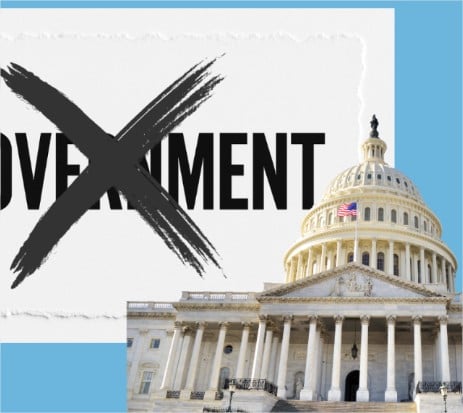In the midst of the worst US housing slump in a decade, a wave of finance and tech layoffs and drumbeats of a potential recession, open houses in affluent New York suburbs are packed.
Offers come in fast — sometimes for hundreds of thousands over asking.
A typical scene played out on a cloudy Sunday last month in Scarsdale, a suburb about 20 miles (32 kilometers) north of Manhattan known for its bucolic setting and high-rated schools. At the tail end of an open house, a dozen people were still wandering in and around a 1926 Tudor-style house listed for about $1.93 million.
An older couple took video on their iPhone for their offspring too busy to attend, while a younger man walked around with his infant in a chest carrier. The house was in need of some touch-ups. Somebody whispered that the hardwood floors were scratched, another said that the refrigerator looked warped, and a pair of kitchen cabinet doors was missing. It hardly mattered.
With few other homes on the market, the 3,400-square-foot (316-square-meter) house attracted almost 100 groups of visitors, and netted six bids. It went under contract five days after the open house for $2.28 million.
“Demand is very high in all price ranges,” said Laura Miller, the listing agent with Houlihan Lawrence. “There are tons of buyers and not enough inventory.”
The New York City region, a dense population center with many high-earning professionals and little room for new construction, is in some ways an outlier. But the area’s relatively strong real estate demand is also a bright spot in the US housing market as the key spring selling season approaches and underscores the vast disparities in different parts of the country.
After a doubling of mortgage rates in the past year slammed sales, borrowing costs have moderated and buyers’ interest is returning in some areas. Pending home sales unexpectedly climbed in December, homebuilder shares have rallied in recent weeks and brokerage Redfin Corp. said last month that the market appears to have turned a corner.
Prices have tumbled in markets such as San Francisco, Phoenix and Las Vegas, where values skyrocketed beyond the reach of locals during the two-year pandemic boom. But the gains were more modest in much of the Northeast, meaning those areas don’t have as far to fall.
Survey: How much will US home prices decline? Share your views here.
In New York’s Westchester County, which includes brand-name towns such as Scarsdale and Bronxville, and New Jersey’s suburbs in Essex and Bergen counties, asking prices for homes are up more than 10% year over year, according to Realtor.com, indicating demand is robust relative to supply.
Spring Season
Fundamentally, the US labor market is still relatively strong, with the unemployment rate at 3.4%. There’s still a cohort of buyers out there needing houses for the typical reasons — new jobs, growing families and a desire for more space — particularly with the giant millennial generation in its peak homebuying years. In the busiest markets from New York to Miami, they’re fighting for the meager scraps of inventory as homeowners have little incentive to sell and give up their low mortgage rates.
“This is going to be a spring season characterized by big differences between markets,” said Benjamin Keys, a real estate professor at the University of Pennsylvania’s Wharton School. “In some places new listings will lead to a line of people out the door and in others, crickets.”
For the housing industry, the spring season is like Christmastime for retailers. It can begin as soon as February in some parts of the country as buyers try to line up deals in time to move by summer, before the new school year.
One big question looming over the market ahead of the key season is whether buyers will have much to purchase. In most of the US, active listings, still low by pre-pandemic standards, are rising. That could provide some runway for improving sales but only if buyers turn up this spring.
It’s a different story in and around New York where shoppers are trying to get a head start on the competition and are finding a market that has already been picked clean. Only six US counties had annual drops in available listings in January. Five of them were in New York or its suburbs, and the sixth was in Hartford, Connecticut, according to an analysis of the top 100 counties from Realtor.com.
Westchester had the biggest plunge in active listings in the US, falling 15% from a year earlier. By comparison, inventory rose 65% nationwide, more than doubling in markets including Palm Beach County, Florida, and quadrupling in Denton and Collin counties, north of Dallas, one of the busiest corridors for new home construction.
The housing market may remain in a deep freeze unless mortgage rates sink, or the economy takes a sharp turn for the worse, pushing more homeowners to sell. The good news is that if supply remains relatively low, it will keep home prices from falling too far— the type of gentle landing for the economy that the Federal Reserve is trying to engineer. The central bank signaled last week that more rate increases are coming, while acknowledging that sectors including housing have slowed.
Analysts such as Mark Zandi, chief economist of Moody’s Analytics, said the job market has proven to be more resilient than expected. He anticipates mortgage rates for 30-year loans will hover around 6.5%, close to where they are now, for the rest of the year. But the market will remain under pressure, with US prices falling about 10% by the end of 2025, he said.
“There are a lot of pent-up life events out there, and at some point people will have to make hard decisions and move,” Zandi said. For now, sellers are “holding on to see if mortgage rates don’t come down.”
Places such as San Francisco continue to struggle, with prices down 1.6% in November from a year earlier, the sharpest drop in more than a decade, according to the S&P CoreLogic Case-Shiller index. That market has been hit hard by tech industry layoffs and flexible work policies that make it easier for people to move to cheaper areas.
Houses in much of the Midwest remain more affordable despite the Covid surge pricing. In the Kansas City area, fewer than 100 homes came on the market last Thursday and Friday, about a third of what’s normal for this time of year, said Katherine Lee, an agent with Bash & Co. Sotheby’s International Realty.
The shortage is creating a feeding frenzy. On Saturday, she tended to 40 groups of buyers at a four-bedroom house listed for $800,000 in Overland Park, Kansas. All three listings she put on the market last week had a handful of offers by Monday.
“They wait for houses to come on the market and then dash to get in the door,” she said of the buyers. “It’s a matter of whose offer is aggressive enough to win.”
In New York, the economy remains strong despite layoffs at employers such as Goldman Sachs Group Inc. and Alphabet Inc.’s Google. Three-day hybrid work policies, becoming standard in some industries, mean greater demand for homes with more space, but within a commutable distance.
Many sellers may be waiting until March to put homes on the market but the for-sale signs aren’t coming out yet. New listings in January so far have dropped 5% in the US, according to Realtor.com. The New York area has seen even deeper slides, with new inventory down more than 40% in Manhattan and Brooklyn, the most in the country, and more than 20% in Westchester and Bergen counties.
“We are begging people to sell right now,” said Arlene Gonnella, an agent at Weichert REALTOR® in Short Hills, one of New Jersey’s most expensive areas. “We are trying to tempt them with buyers who are ready, willing and able to pay up.”
Tight Supply
The lack of supply in the suburbs is a lingering after-effect of pandemic lockdowns. City dwellers fled in search of more space indoors and out, buying homes that had been sitting on the market for years and enticing some empty-nesters to speed up their timelines for selling to cash in on surging prices, agents across the region said. Other baby boomers who might have otherwise considered selling in 2022 or 2023 decided to stay in part because tight inventory limited their options. Their children who saved money by living with them when Covid restrictions were in place are now looking to buy and have years of savings from free housing bolstering their down payments.
Buyers are beginning to accept that higher mortgage rates are just the new normal, and that’s encouraging them to bid, said Scott Shuman, chief operating officer of a team at Keller Williams Realty focusing on high-end towns in northern New Jersey. They’ve realized “2% to 3% interest rates are not coming back tomorrow,” he said.
Inventory is so tight that some buyers have been forced to widen their target beyond state lines and look at multiple counties, Shuman said. “They’re taking the view that a suburb is a suburb,” he said.
Inside a four-bedroom colonial in Larchmont — a village in southeastern Westchester that’s prized for its quick commute to Manhattan and access to the Long Island Sound — Julia B. Fee Sotheby’s International Realty agent Sonya Cronin set out house-shaped sugar cookies on the granite kitchen counter.
The 114-year-old house with three fireplaces, historic arched windows and an asking price of just under $1.9 million, drew in a mix of local buyers eager to trade up and urbanites desperate for space — such as Katie and Shaun Fullalove with a restless toddler son and a baby on the way.
Like many New Yorkers with expanding families, the Brooklyn couple is under pressure to move “before the walls close in on us in our two-bedroom, two bath,” Katie Fullalove said.
The house wasn’t right for them, but five other buyers made offers and the sale went into contract within a week. The winning bid was around $2.3 million — $400,000 over asking.




